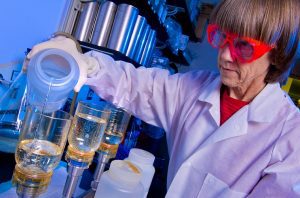
A thorough inspection of cooling towers across Campbelltown is under way following confirmation three local people have developed Legionnaires’ disease.
Council officers are currently working with NSW Health in an effort to identify the contamination source.
Two men, one in his 50s and the other in his 60s, and a female in her 70s – all Macquarie Fields residents – were reported with the disease in the past week.
All three cases developed the disease – a bacterial infection of the lungs – from breathing in water droplets contaminated with Legionella pneumophila bacteria. Legionnaires’ disease cannot be spread from person to person.
Council general manager Lindy Deitz told the Voice staff were working hard to try to discover the source of the contamination.
Ms Deitz said council and health staff were working off a prepared list of cooling towers across the LGA.
“I’d like to thank council staff for their efforts and hard work so far,” Ms Deitz said.
The general manager said that council staff regularly checked local cooling towers and generally there had been no problems.
“What we find is that local owners of premises with cooling towers tend to make sure there are no problems,” she said.
Dr Kate Alexander, the acting director of public health at the South Western Sydney Local Health District, said the Campbelltown City Council had not been advised of any elevated levels of Legionella in the area, but has begun precautionary inspection and sampling of cooling towers and other potential sources of contaminated water droplets in the area, in partnership with the public health unit.
“The three people diagnosed with Legionnaires’ disease all spent time in the Macquarie Fields area during the period they contracted the infection and all reported becoming unwell between March 30 and April 9,” Dr Alexander said.
Isolated cases of Legionnaires’ disease occur throughout the year.
It is only when three or more cases are found to have been in the same area before becoming ill that there is cause for wider concern.
Legionnaires’ disease causes fever, chills, a cough and shortness of breath.
Dr Alexander said anyone who has recently been in the Macquarie Fields area who develops symptoms of Legionnaires’ disease, should visit their GP.
“The time from exposure to the onset of symptoms is typically between two and 10 days,” Dr Alexander said.
[social_quote duplicate=”no” align=”default”]“People who develop this disease are diagnosed by chest X-ray and a urine test, and usually require antibiotic treatment in hospital.”[/social_quote]
The bacteria that cause Legionnaires’ disease live in water and can multiply in the water used to cool air conditioning systems, so infection is prevented by routinely maintaining and treating the systems.
People outside can be exposed to the bacteria when a water cooling system emits contaminated water particles into the air.
NSW Health has strengthened the Public Health Regulation to reduce the community’s risk of Legionnaires’ disease, requiring building owners to conduct monthly tests on cooling towers and notify high levels of Legionella and other bacteria to local council. The new regulation came into effect in January this year.
In 2016 and 2017 there were 93 and 81 cases of Legionella pneumophila infection notified to NSW Health. This year NSW Health has been notified of 27 Legionella pneumophila cases.
For further information on Legionnaires’ disease visit: http://www.health.nsw.gov.au/Infectious/factsheets/Pages/legionnaires_disease.aspx



